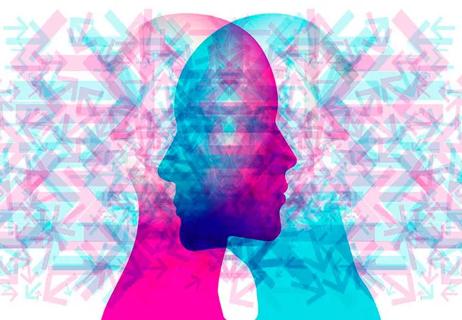After adjusting for comorbidities, melatonin usage was associated with reduced risk

Results from a new Cleveland Clinic-led study suggest that melatonin, a hormone that regulates the sleep-wake cycle and is commonly used as an over-the-counter sleep aid, may be a viable treatment option for COVID-19.
Advertisement
Cleveland Clinic is a non-profit academic medical center. Advertising on our site helps support our mission. We do not endorse non-Cleveland Clinic products or services. Policy
As COVID-19 continues to spread throughout the world, particularly with cases rising during what some have termed the “fall surge,” repurposing drugs already approved by the U.S. Food and Drug Administration for new therapeutic purposes continues to be the most efficient and cost-effective approach to treat or prevent the disease.
According to the findings published today in PLOS Biology, a novel artificial intelligence platform developed by Lerner Research Institute researchers to identify possible drugs for COVID-19 repurposing has revealed melatonin as a promising candidate.
Analysis of patient data from Cleveland Clinic’s COVID-19 registry also revealed that melatonin usage was associated with a nearly 30% reduced likelihood of testing positive for SARS-CoV-2 after adjusting for age, race, smoking history and various disease comorbidities. Notably, the reduced likelihood of testing positive for the virus increased from 30 to 52 percent for African Americans when adjusted for the same variables.
“It is very important to note these findings do not suggest people should start to take melatonin without consulting their physician,” said Feixiong Cheng, PhD, assistant staff in Cleveland Clinic’s Genomic Medicine Institute and lead author on the study. “Large-scale observational studies and randomized controlled trials are critical to validate the clinical benefit of melatonin for patients with COVID-19, but we are excited about the associations put forth in this study and the opportunity to further explore them.”
Advertisement
Here, the researchers harnessed network medicine methodologies and large-scale electronic health records from Cleveland Clinic patients to identify clinical manifestations and pathologies common between COVID-19 and other diseases. Specifically, they measured the proximity between SARS-CoV-2 host genes/proteins and those well-associated with 64 other diseases across several disease categories (malignant cancer and autoimmune, cardiovascular, metabolic, neurological and pulmonary diseases), where closer proximity indicates a higher likelihood of pathological associations between the diseases.
They found, for example, that proteins associated with respiratory distress syndrome and sepsis, two main causes of death in patients with severe COVID-19, were highly connected with multiple SARS-CoV-2 proteins. “This signals to us, then,” explained Dr. Cheng, “that a drug already approved to treat these respiratory conditions may have some utility in also treating COVID-19 by acting on those shared biological targets.”
Overall, they determined that autoimmune (e.g., inflammatory bowel disease), pulmonary (e.g., chronic obstructive pulmonary disease and pulmonary fibrosis) and neurological (e.g., depression and attention-deficit hyperactivity disorder) diseases showed significant network proximity to SARS-CoV-2 genes/proteins and identified 34 drugs as repurposing candidates, melatonin chief among them.
“Recent studies suggest that COVID-19 is a systematic disease impacting multiple cell types, tissues and organs, so knowledge of the complex interplays between the virus and other diseases is key to understanding COVID-19-related complications and identifying repurposable drugs,” said Dr. Cheng. “Our study provides a powerful, integrative network medicine strategy to predict disease manifestations associated with COVID-19 and facilitate the search for an effective treatment.”
Advertisement
Please note: This article was originally published here.
Advertisement
Advertisement

First full characterization of kidney microbiome unlocks potential to prevent kidney stones

Researchers identify potential path to retaining chemo sensitivity

Large-scale joint study links elevated TMAO blood levels and chronic kidney disease risk over time

Investigators are developing a deep learning model to predict health outcomes in ICUs.

Preclinical work promises large-scale data with minimal bias to inform development of clinical tests

Cleveland Clinic researchers pursue answers on basic science and clinical fronts

Study suggests sex-specific pathways show potential for sex-specific therapeutic approaches

Cleveland Clinic launches Quantum Innovation Catalyzer Program to help start-up companies access advanced research technology